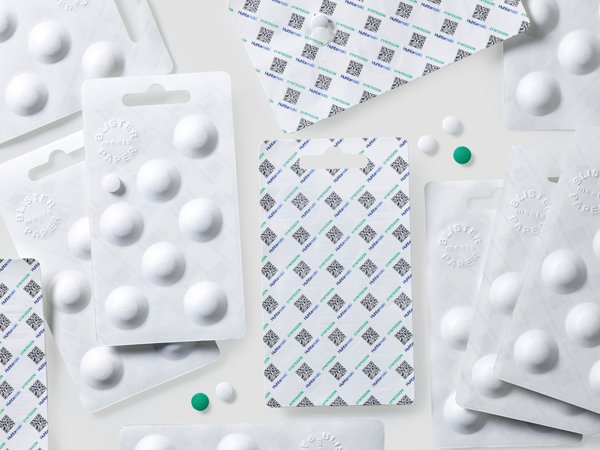
Once again, the German Packaging Institute (Deutsches Verpackungsinstitut e.V.) has honored Syntegon with the German Packaging Award – this time in the ‘Sustainability’ category. A report dated 27 July 2021 says, the jury was impressed by the sustainability and good functionality of the paper-based packaging solution ‘Blister meets Paper,’ which should also appeal to the health and environmentally-conscious customer in terms of feel and appearance. Syntegon developed the innovative blister packaging together with the Finnish packaging material manufacturer Huhtamaki.
“While eco-friendly and health-conscious customers can already find sustainable packaging solutions for a wide range of products, an environmentally friendly alternative for push-through packaging for tablets and capsules was not available to date. That’s something we wanted to change with Blister meets Paper,” Torsten Sauer, Sustainability Project manager at Syntegon, explains. The paper-based blisters are particularly suitable for nutraceuticals. In the submitted version, each blister has seven cavities for one tablet per weekday.
Sustainable & safe blister uses BillerudKorsnäs FibreForm paper

While paper-based packaging offers advantages in terms of sustainability, it requires additional barrier layers to adequately protect the product without compromising recyclability. In addition, the tablets and capsules have to be pushed out of the blisters without being damaged. “This challenge addresses both the material and the geometry of the packaging,” explains Matthias Klauser, Sustainability expert at Syntegon. “Thanks to the combination of our TPU 1000 form, fill and seal machine for paper packaging,the 3D-formable FibreForm paper from BillerudKorsnäs, and the sealable barrier coating from Huhtamaki, we have succeeded in forming paper with the geometry required for tablets in cavities of three to four millimeters.” In the future, the paper blisters will also be available with diameters of six to ten millimeters to package larger tablets such as pain killers.
Packaging material expert Huhtamaki used the same sealable barrier coating for the blister’s lidding material as in the base material, and finished it with a special process to push the tablet easily through the material. The environmentally friendly material concept consisting of a thermoformable base film and a push-through lidding film with barrier coating is marketed as ‘Huhtamaki Push Tab paper.’ The thermoformable barrier and seal layer is also heat-sealable, which makes the paper blister packaging’s barrier properties comparable to classic blister packaging made of mono-PVC or aluminum. “At the same time, we never lost sight of the sustainability aspect: both the base and lidding material can be be recycled,” Sauer emphasizes.
Sustainable eye-catcher at the point of sale

Blister meets Paper attracts attention at the point of sale – not only due of its sustainable material, but also because of its numerous design options. The paper blisters can be printed on both sides, while an embossed brand logo can be applied to the top. A Euro hole can be punched in the upper area of the blister, which saves large quantities of packaging material compared to conventional blisters in folding cartons. “This offers many opportunities for a successful product presentation that emphasizes the environmental friendliness of the product. Manufacturers can also add Braille to the blisters or print a QR code for further information. The latter saves on the package insert and the cardboard outer packaging,” Sauer explains. “The result is a sophisticated all-round packaging concept for nutraceuticals that support customers in taking care of both their health and the environment.”
The German Packaging Award
The German Packaging Institute dvi has been awarding the German Packaging Award since 1963. The international competition is the most important European showcase of achievements in the packaging industry and is held annually under the patronage of the German Federal Minister for Economic Affairs and Energy. An independent jury evaluates the best innovations and solutions in a total of ten categories. Sustainability was one of this year’s focal points.








